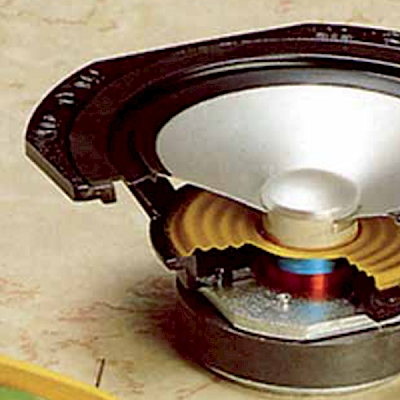
Posted in: History | Technology
Drivers
Ceramic-Coated Aluminium/Magnesium is a material originally developed by the aerospace industry for jet engine components. Its properties are ideal for loudspeaker cones being extremely rigid, yet light enough to yield high overall efficiency. In manufacture, aluminium/magnesium alloy undergoes a three-stage stress-relieving process to remove surface deformation and molecular weakness. Once formed, the alloy cone is subjected to a high temperature anodic coating process in which a layer of pure ceramic alumina is depleted onto its surfaces to a depth of 50 microns, producing a completely rigid sandwich of alloy and heat-dissipating ceramic material.

Conventional cones are liable to flex or twist in operation, producing a significant level of audible distortion. C-CAM cones have a much higher resistance to bending stress and therefore exhibit much greater fidelity over their entire operating range. C-CAM tweeters and woofers share an audible consistency producing a smooth transition of frequencies and a sense of realism and cohesion in the soundstage.
Bass Drivers
Refined over many years by Monitor Audio, Ceramic-Coated Aluminium/Magnesium is used as a driver cone material for all our speaker designs from the mid-market models up. Originally developed by the aerospace industry for jet engine components, C-CAM's properties are ideal for loudspeaker cones being extremely rigid, yet light enough to yield high overall efficiency.

C-CAM bass drivers are able to resist the bending distortion imposed by sudden and extreme bass excursions to reproduce very clean, deep and dynamic bass frequencies. Conventional cone materials are more likely to flex in operation, producing a significant level of audible distortion.